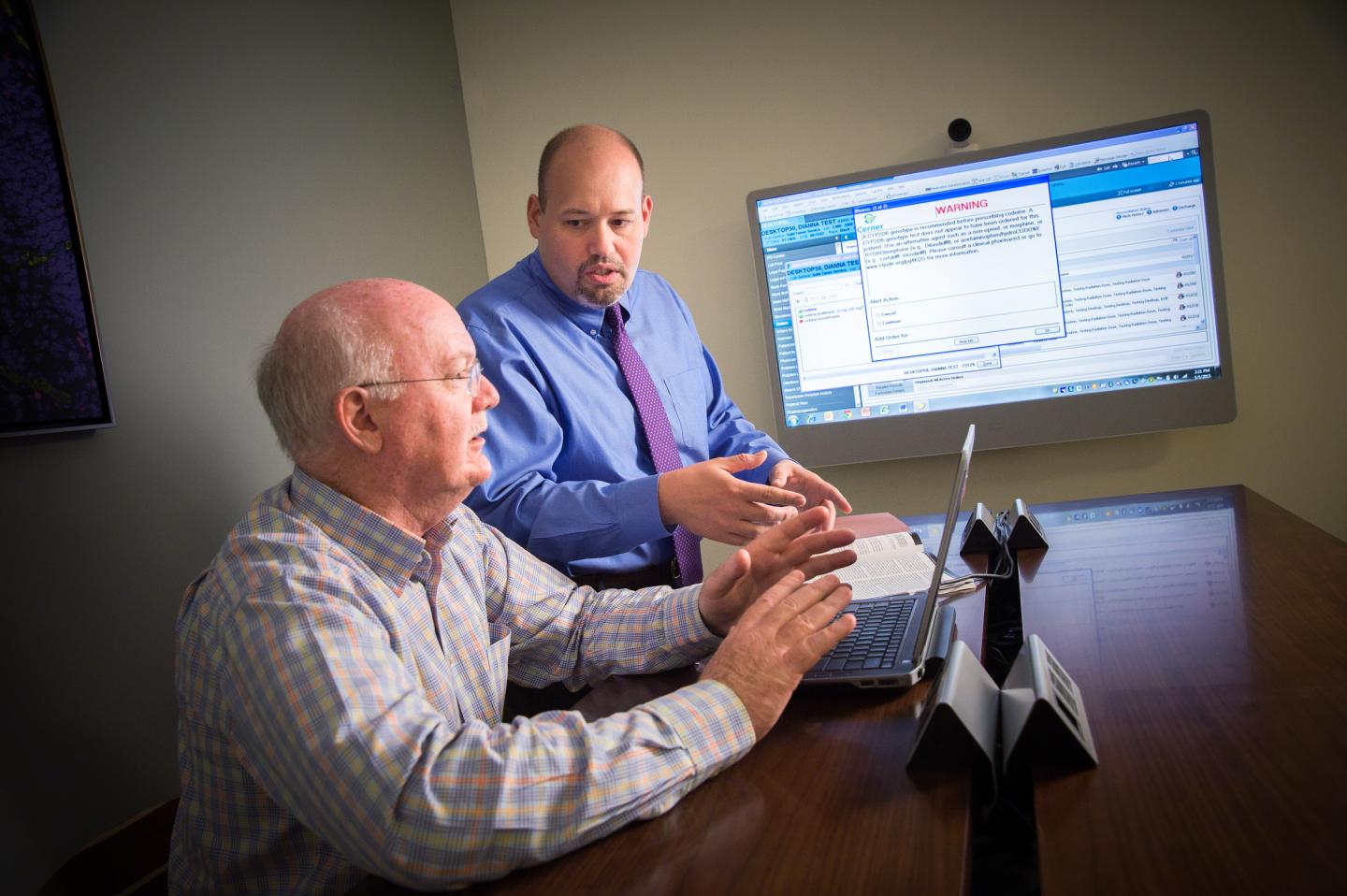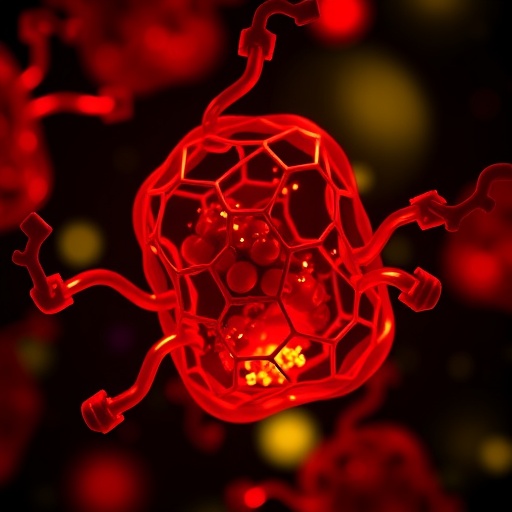
Credit: St. Jude Children’s Research Hospital
For anyone who regularly uses a computer, the experience of clicking through multipage user agreements is a shared frustration. Being bombarded with too much information can lead to people ignoring vital material.
Clinicians who use electronic health records can experience similar problems with drug interaction alerts. Now, investigators at St. Jude Children’s Research Hospital have developed a method for customizing and reducing these alerts. The study, which appears as an advance online publication today in the journal Pediatrics, enhances the user experience with electronic health records while improving patient safety.
One of the benefits of electronic health records is that the systems are configured to alert clinicians when medications are prescribed that may not work well together. However, the systems are only beneficial when alerts identify relevant problems and when caregivers pay close attention.
“In some instances, clinicians are getting a constant stream of alerts that aren’t appropriate for their patient, leading them to disregard the alerts,” said senior author James Hoffman, Pharm.D., St. Jude chief patient safety officer. “This type of alert fatigue can lead to patient safety concerns.”
Alerts are provided by the company that created and supports the electronic health record system. The alerts are updated on a rolling basis using the latest scientific literature but are intended for general use. There are many alerts for situations that are not applicable to pediatrics, to the context in which medications are administered or to the specific formulation of certain drugs.
A multidimensional approach to evaluating alerts
For this study, the St. Jude team gathered input on the electronic health record’s drug interaction alerts from three sources: a validated survey instrument, an advisory group of St. Jude clinicians, and data within the electronic health record that captured which alerts were most often ignored or overridden. The researchers also grouped drugs into categories to identify broader problems throughout the system.
This was the first study to combine these different ways of evaluating alerts and put them into practice. Overall, the investigators made 26 changes that affected 47 percent of alerts. Alert overrides decreased by 40 percent.
Changes included removing unnecessary alerts and adding context to existing alerts to make them more useful.
One of the major issues the researchers identified involved alerts related to potassium and drugs that can increase potassium levels. Levels that are too high can pose medical problems; however, potassium levels were already regularly monitored.
“About 20 percent of all the alerts generated in three years were for potential increases in potassium,” said first author Calvin Daniels, Pharm.D., Ph.D., of the St. Jude Department of Pharmaceutical Sciences. “What our caregivers really needed was an alert that would tell them if the regular potassium monitoring identified levels that were too high.”
To fix this problem, the researchers turned off the vendor-supplied potassium alert and created a new, enhanced alert that is provided to clinicians only if previous potassium levels are elevated.
“These changes made the system smarter and the alerts more targeted toward true safety issues,” Hoffman said.
Fostering and sharing a culture of patient safety
Although electronic health records are in widespread use, systems vary among institutions. This research presents a customizable approach that different organizations can implement to evaluate their systems.
“Localization of our experiences to each individual setting is key,” Hoffman said. “We’ve provided a framework from which others can pick and choose the right aspects to implement at their institution.”
Making changes to the electronic health record to improve safety relies on a partnership among St. Jude Information Services, the patient safety team, physicians, pharmacists, nurse practitioners and physician assistants from across St. Jude. This process continues at St. Jude as the multidisciplinary advisory group regularly meets to evaluate alerts.
###
The study’s other authors are Jonathan Burlison, Donald Baker, Jennifer Robertson, Andras Sablauer, Patricia Flynn and Patrick Campbell, all of St. Jude.
The research was funded in part by grant CA21765 from the National Institutes of Health, and ALSAC, the fundraising and awareness organization of St. Jude.
St. Jude Children’s Research Hospital
St. Jude Children’s Research Hospital is leading the way the world understands, treats and cures childhood cancer and other life-threatening diseases. It is the only National Cancer Institute-designated Comprehensive Cancer Center devoted solely to children. Treatments developed at St. Jude have helped push the overall childhood cancer survival rate from 20 percent to 80 percent since the hospital opened more than 50 years ago. St. Jude freely shares the breakthroughs it makes, and every child saved at St. Jude means doctors and scientists worldwide can use that knowledge to save thousands more children. Families never receive a bill from St. Jude for treatment, travel, housing and food — because all a family should worry about is helping their child live. To learn more, visit stjude.org or follow St. Jude on social media at @stjuderesearch.
Media Contact
Katy Hobgood Ray
[email protected]
901-595-0564
Original Source
https:/
Related Journal Article
http://dx.




